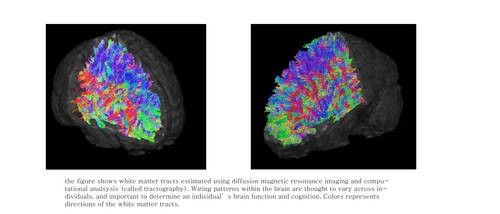Author Interviews, BMJ, Genetic Research, Pediatrics / 10.05.2018
How Many Diseases Should Newborns Be Screened For?
MedicalResearch.com Interview with:
 Dr Sian Taylor-Phillips MPhys, PhD
Associate Professor Screening and Test Evaluation /
NIHR Career Development Fellow
Division of Health Sciences
Warwick Medical School
University of Warwick Coventry
MedicalResearch.com: What is the background for this study? What are the main findings?
Response: In newborn blood spot screening a small amount of blood is taken from newborn babies heels, and this is tested for a range of rare diseases. The idea is to detect each disease earlier when it is more treatable. However, it would be better not to test for some diseases, for example if the test is inaccurate so worries parents that their baby may have a serious illness when they do not. Some countries test for as few as 5 diseases and others as many as 50. In this study we investigated how different countries choose which diseases to test for.
We found that many national recommendations on whether to screen newborn babies for rare diseases do not assess the evidence on the key benefits and harms of screening. Evidence about the accuracy of the test was not considered in 42% of recommendations, evidence about whether early detection at screening has health benefits was not consulted in 30% of recommendations, and evidence around the potential harm of overdiagnosis where babies have variants of the disease that would never have caused any symptoms or ill effects was not considered in 76% of recommendations.
We also found through meta-analysis that when a systematic review was used to bring together the evidence then countries were less likely to recommend screening for the disease.
(more…)
Dr Sian Taylor-Phillips MPhys, PhD
Associate Professor Screening and Test Evaluation /
NIHR Career Development Fellow
Division of Health Sciences
Warwick Medical School
University of Warwick Coventry
MedicalResearch.com: What is the background for this study? What are the main findings?
Response: In newborn blood spot screening a small amount of blood is taken from newborn babies heels, and this is tested for a range of rare diseases. The idea is to detect each disease earlier when it is more treatable. However, it would be better not to test for some diseases, for example if the test is inaccurate so worries parents that their baby may have a serious illness when they do not. Some countries test for as few as 5 diseases and others as many as 50. In this study we investigated how different countries choose which diseases to test for.
We found that many national recommendations on whether to screen newborn babies for rare diseases do not assess the evidence on the key benefits and harms of screening. Evidence about the accuracy of the test was not considered in 42% of recommendations, evidence about whether early detection at screening has health benefits was not consulted in 30% of recommendations, and evidence around the potential harm of overdiagnosis where babies have variants of the disease that would never have caused any symptoms or ill effects was not considered in 76% of recommendations.
We also found through meta-analysis that when a systematic review was used to bring together the evidence then countries were less likely to recommend screening for the disease.
(more…)
 Dr Sian Taylor-Phillips MPhys, PhD
Associate Professor Screening and Test Evaluation /
NIHR Career Development Fellow
Division of Health Sciences
Warwick Medical School
University of Warwick Coventry
MedicalResearch.com: What is the background for this study? What are the main findings?
Response: In newborn blood spot screening a small amount of blood is taken from newborn babies heels, and this is tested for a range of rare diseases. The idea is to detect each disease earlier when it is more treatable. However, it would be better not to test for some diseases, for example if the test is inaccurate so worries parents that their baby may have a serious illness when they do not. Some countries test for as few as 5 diseases and others as many as 50. In this study we investigated how different countries choose which diseases to test for.
We found that many national recommendations on whether to screen newborn babies for rare diseases do not assess the evidence on the key benefits and harms of screening. Evidence about the accuracy of the test was not considered in 42% of recommendations, evidence about whether early detection at screening has health benefits was not consulted in 30% of recommendations, and evidence around the potential harm of overdiagnosis where babies have variants of the disease that would never have caused any symptoms or ill effects was not considered in 76% of recommendations.
We also found through meta-analysis that when a systematic review was used to bring together the evidence then countries were less likely to recommend screening for the disease.
(more…)
Dr Sian Taylor-Phillips MPhys, PhD
Associate Professor Screening and Test Evaluation /
NIHR Career Development Fellow
Division of Health Sciences
Warwick Medical School
University of Warwick Coventry
MedicalResearch.com: What is the background for this study? What are the main findings?
Response: In newborn blood spot screening a small amount of blood is taken from newborn babies heels, and this is tested for a range of rare diseases. The idea is to detect each disease earlier when it is more treatable. However, it would be better not to test for some diseases, for example if the test is inaccurate so worries parents that their baby may have a serious illness when they do not. Some countries test for as few as 5 diseases and others as many as 50. In this study we investigated how different countries choose which diseases to test for.
We found that many national recommendations on whether to screen newborn babies for rare diseases do not assess the evidence on the key benefits and harms of screening. Evidence about the accuracy of the test was not considered in 42% of recommendations, evidence about whether early detection at screening has health benefits was not consulted in 30% of recommendations, and evidence around the potential harm of overdiagnosis where babies have variants of the disease that would never have caused any symptoms or ill effects was not considered in 76% of recommendations.
We also found through meta-analysis that when a systematic review was used to bring together the evidence then countries were less likely to recommend screening for the disease.
(more…)







